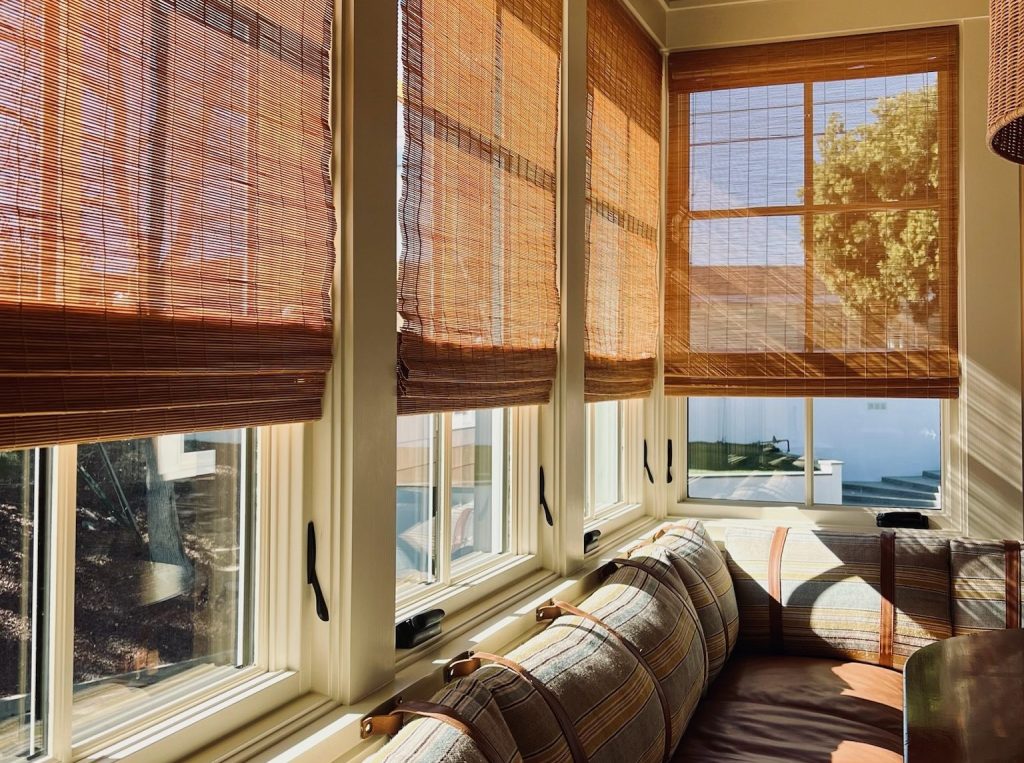
Natural Woven Shades Guide
What are natural woven shades made of?
Natural woven shades use grasses, bamboo, jute, and wood reeds. Each fiber has its own texture and color shift. The weave creates a warm, organic look that softens glass and adds depth. In bright rooms they add texture without feeling heavy. They suit coastal homes and classic spaces equally well.
Do they offer privacy during the day and night?
During the day, most weaves give soft privacy. At night, the lights inside make the weave more transparent. If you want steady privacy, add a liner. A privacy liner keeps the glow and blocks outlines. For full darkness in bedrooms, use a blackout liner behind the weave.
Do i need a liner and which one should I choose?
Choose a privacy liner for living rooms and kitchens where you want light without clear views in. Pick a blackout liner for nurseries and media rooms. For a soft drape, ask for a free hanging liner. For a crisp look, ask for a bonded liner. Both improve energy performance and protect the weave from fading.
What about light gaps and edge binding?
Light gaps happen with inside mount because the shade needs clearance. Outside mount reduces gaps. Edge binding is a fabric ribbon along the sides that protects the edges from wear and adds a tailored finish. Choose a binding that matches your trim or your drapery for a clean match.
Can natural woven shades work in bedrooms?
Yes. Add a blackout liner and use outside mount to cover trim. In rooms with streetlights add a headrail with a valance and consider drapes over the shade for the darkest result. The texture makes bedrooms feel calm while the liner handles light control.
How do they handle humidity in coastal areas?
In Malibu and along the coast air can be damp. Choose woven wood shades made with stable reeds and a proper liner. Avoid direct spray from open windows. In bathrooms place the shade away from steam and choose a privacy liner. For very damp spots consider a faux wood look in the same tone.
Inside mount or outside mount, which is better?
Inside mount shows off trim and keeps a minimal line. Outside mount hides uneven frames and improves blackout when you use a liner. In older Los Angeles homes outside mount often looks cleaner because it squares up slight shifts in plaster and wood.
Can I motorize natural woven shades?
Yes. Motorized woven wood shades lift evenly and protect delicate weaves from pulling. Power can be rechargeable battery, plug in, or hardwired. Use a simple remote or app control. Motorization is popular on tall windows and in living rooms with many matching shades.
How do natural woven shades compare to fabric roman shades?
Both stack neatly and offer rich texture. Natural woven shades bring organic variation and visible fibers. Fabric roman shades give solid color and tighter light control with a liner. Many clients mix them, using woven wood shades in living areas and fabric romans in bedrooms.
What should I expect with color and texture variation?
Natural fibers vary by harvest, so small shifts in tone and texture are normal and part of the charm. Order swatches and check them in morning and afternoon light. If you want less variation, choose a tighter weave and a liner. Edge binding also reduces the look of slight side fray.
How do I clean and care for them?
Dust gently with a microfiber cloth or a soft brush attachment. Do not soak the weave. Spot clean the liner with mild soap if needed. Keep windows closed during storms to avoid moisture. With normal care, woven wood shades age beautifully and develop a soft patina.
Thinking About Natural Woven Shades?
Bamboo and grasses add texture without making the room heavy. Choose a privacy or blackout liner if you want more control at night. Take a look at our project gallery for real rooms in Los Angeles and coastal homes in Malibu. If you need help with weave choice and edge binding, send us a message. We’ll guide you to a mix that feels warm and practical.
